Eurozone retail sales dropped -0.4% mom in April, slightly better than expectation of -0.5% mom. Volume of retail trade decreased by 0.4% for food, drinks and tobacco and for non-food products, while automotive fuel increased by 0.1%. EU28 retail sales dropped -0.3% mom. In EU, volume decreased by 0.4% for non-food products and by 0.2% for food, drinks and tobacco and for automotive fuel.
Among Member States for which data are available, the largest decreases in the total retail trade volume were registered in Germany (-2.0%), Portugal (-1.0%) and Croatia (-0.9%). The highest increases were observed in Sweden (+2.4%), Slovenia (+2.0%) and Malta (+1.7%).
Eurozone PPI came in at -0.3% mom, 2.6% yoy in April, below expectation of 0.2% mom, 3.1% yoy. EU 28 PPI was at -0.1% mom, 2.9% yoy.
The largest monthly decreases in industrial producer prices were recorded in Belgium (-1.7%), Italy (-1.5%) and Sweden (-0.8%), while the highest increases were observed in Denmark and Greece (both +1.2%), and Hungary (+0.9%).
Annually, the highest increases in industrial producer prices were recorded in Romania (+6.7%), Hungary (+6.5%) and Latvia (+5.6%), while there were no decreases observed.




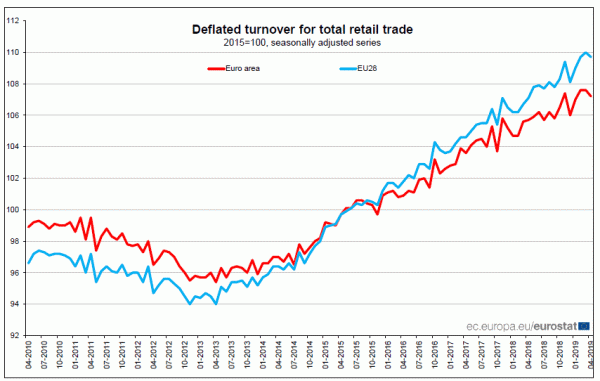
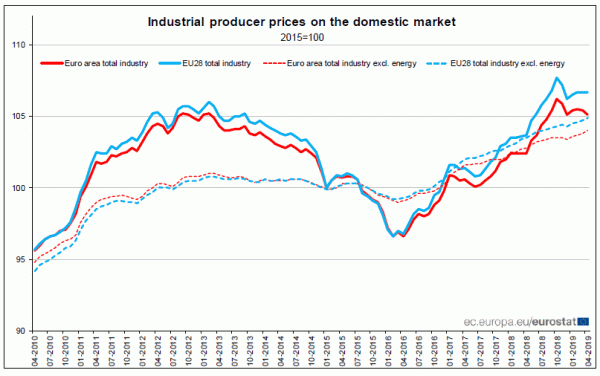
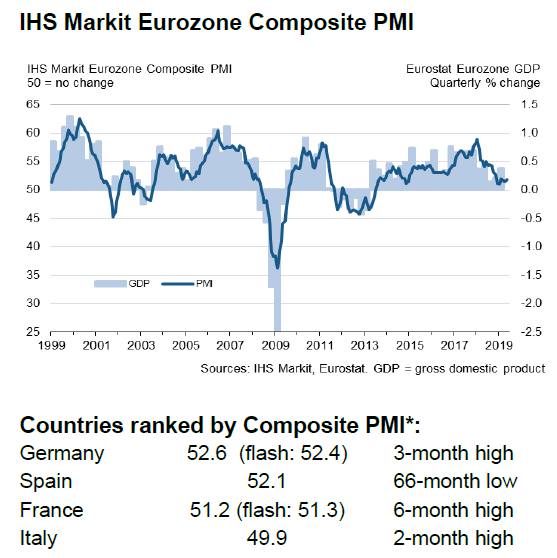
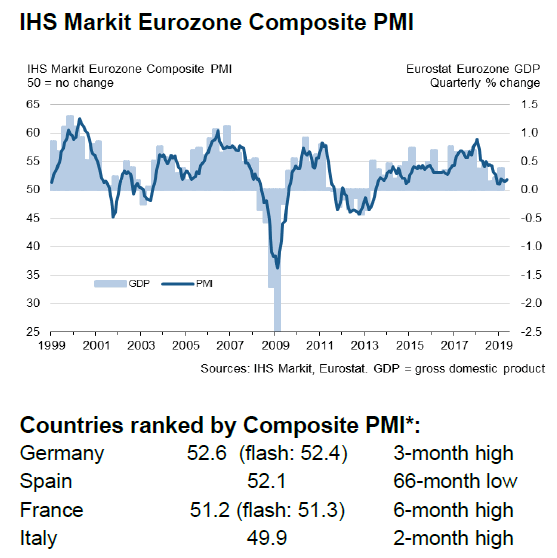
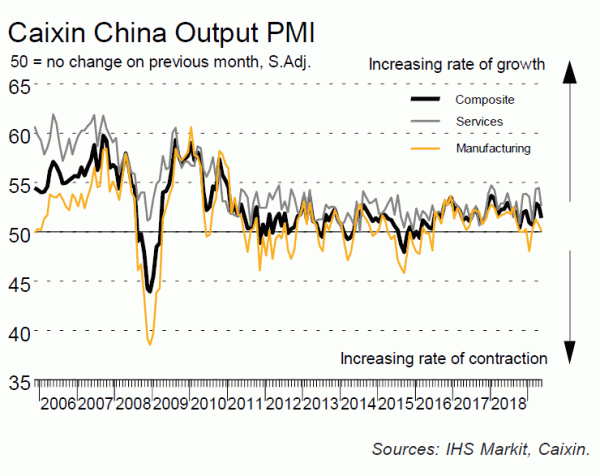
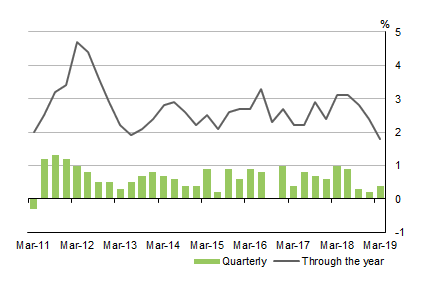
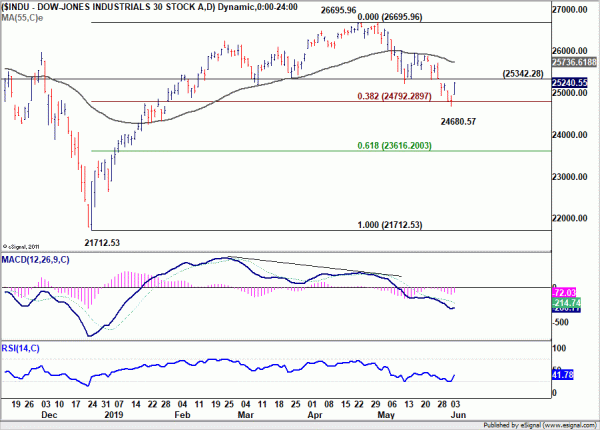
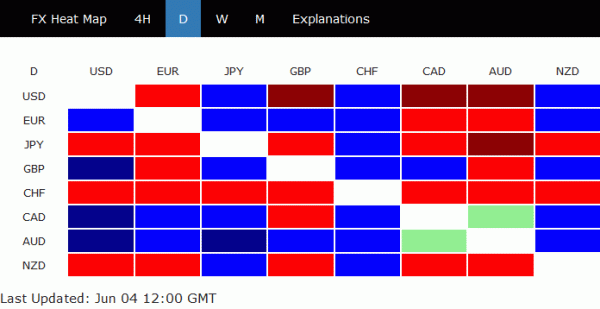
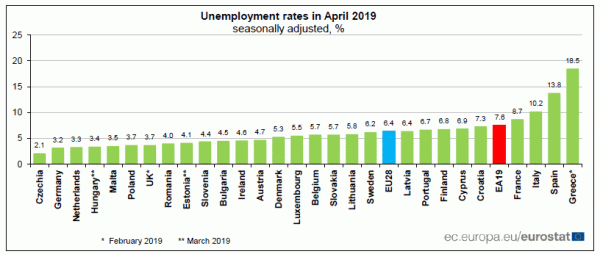
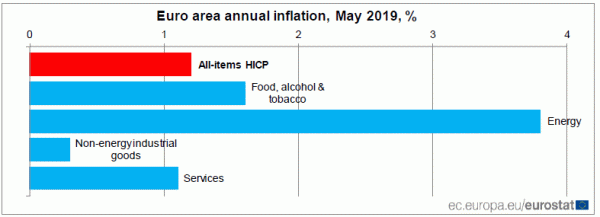
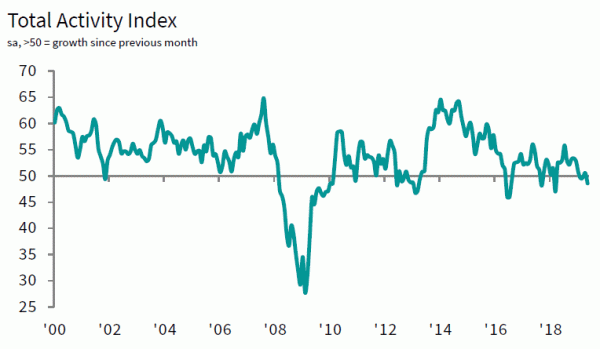

EU Dombrovskis: EDP on Italy is not just about procedure
European Commission Vice President Valdis Dombrovskis said the Commission concluded that Italy’s debt criterion is not complied with and there fore a “debt-based excessive deficit procedure (EDP) is warranted”. EDP is not opened today yet. And EU member states will give their views on the report on Italy first. Then, economic and financial committee has two weeks to form its opinion. He added “it’s much more than just about the procedure, when we look at the Italian economy we see the damage that recent policy choices are doing.”
The Commission estimated that Italy used EUR 2.2B more than expected to service its debt in 2018. And it’s paying as much toward its debt servicing as it does toward its entire education system. Dombrovskis added “growth has come to almost a halt … and we now expect the Italian debt (to GDP) ratio to rise in 2019 and 2020 to over 135%.”
Earlier today, coalition League’s economic chief Claudio Borghi rejects fiscal tightening measures and warned that Economy Minister Giovanni Tria must take a “hard line on EU budget talks”.